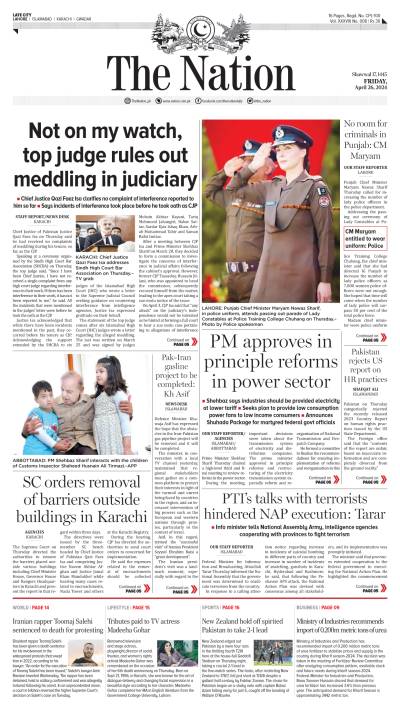KHAR (Reuters) - I had not expected Pakistans tribal areas to be so neat and so prosperous. These are meant to be the badlands, mythologised as no-go areas by Kiplingesque images of xenophobic Pashtuns, jezail musket in hand, defying British troops from rugged cliff tops. They are the ungovernable lands where al-Qaeda took sanctuary after the 2001 invasion of Afghanistan; the bastion of militants said to threaten the entire world. Yet to fly by helicopter for the first time into Bajaur tribal agency is to challenge the more wildly imagined cliches about this little-visited region on the Pakistan-Afghan border. Here, in the northernmost part of the FATA, you realise this region is no longer as ferocious as feared and that while militants still call the shots in parts of FATA, Bajaur at least is somewhat pacified. The Pakistan army knows this and has brought us, a small group of foreign journalists, to Bajaur to try to convince us it has turned a corner in its battle against militants. It is a message we are given repeatedly on a whirlwind tour of the country. In Islamabad, the city is relatively relaxed despite many checkpoints, the jacaranda trees are in bloom and families are back out strolling in the parks. The still-frequent bombings and lingering militant hideouts, including in North Waziristan on the Afghan border, give plenty of grounds for scepticism. But visiting Bajaur is meant to make you believe that something has changed. Our helicopter lands in Khar, at a fort which less than two years ago was under siege with rockets raining down every day. Authorities had ceded control of the surrounding area running up to the Afghan border to militants believed to have once offered sanctuary to al-Qaeda leader Ayman al Zawahiri. It became so bad that, according to one military official, the army feared even the fort would be overrun, the troops inside either massacred or taken prisoner en masse. Outside the fort, the militants ran their own checkpoints, collected revenue, beheaded prisoners in the bazaar and convinced every family to offer up one male child to the cause. Even reopening a marble factory required written permission from the militants; another man - according to the army - turned himself from labourer to landlord by successfully navigating the paperwork of their newly created bureaucracy. Now we are able to drive out of the fort towards the border to inspect an abandoned former stronghold of the Taliban. This is a region which we are told was run according to a 6,000-year-old tribal system - primitive say some, mature say others - where each individual was so clear of his or her obligation to society that it worked perfectly in its own way. The fields are either neatly terraced or carefully laid out and the land is well-tended and fertile. If you have travelled in South Asia, it looks remarkably prosperous, either thanks to the old tribal order or money sent in by workers in the Gulf. The terrain is hilly rather than rugged, although the mountains rise up at the Afghan border in the distance. The militants became so entrenched that when Pakistani authorities tried to reassert control in 2008 by setting up a checkpoint at the regions main crossroads, the 150 troops there found themselves surrounded by a thousand fighters. They began to run out of water and ammunition and each party sent from Khar to rescue them was ambushed. Eventually, after fierce fighting, 140 made it back to Khar. But it was enough to convince the army to launch a full-scale military operation. In February, the army cleared out the last of the main militant strongholds in Bajaur after months of intense fighting which destroyed villages, left gaping wounds in buildings from rocket-propelled grenades (RPGs), and sent villagers fleeing. Our small group drives out of the fort of Khar in pick-up trucks, soldiers standing in the back around a rather alarming stack of black-tipped RPGs meant to guarantee our safety. The roads here are better than in much of South Asia and we drive fast - presumably to avoid a bullet from a lone gunman or a remotely triggered IED. It is clear that while the strongholds may have been overrun, the area is still not secure. Yet the atmosphere is less threatening. The crowds of men we come across along the road stare, but without menace. The young girls in white, their heads but not their faces covered, ignore us. Women are nowhere to be seen. The soldiers who fan out when we reach the abandoned stronghold at Damadola some 20 minutes drive away, where local militant leader Fakir Mohammad once held court, are watchful but not jumpy. At the very least, the myth of the ungovernable tribal areas - so beloved of Raj-era tales - has been broken. As the army pressed forward in the tribal areas, some militants escaped, including the leaders, into Afghanistan, or back into the population. Some were captured, many were killed. The last of them retreated into a warren of caves dug out of the hillside.
Friday, April 26, 2024
Breaking the myths of tribal areas
KP appoints Sonia Shamroz as first woman AIG police
11:26 AM | April 26, 2024
SACM visits GTVC, checks attendance register
April 26, 2024
Terrorism to be combated with joint efforts: Saif
April 26, 2024
Agreement signed to develop Haripur Digital City
April 26, 2024
Sherry urges PTI to avoid disruptive politics
April 26, 2024
Economic Challenges
April 26, 2024
No Compromise
April 26, 2024
Strength and Solidarity
April 26, 2024
Musk vs Australia
April 25, 2024
Reforming Rehab
April 25, 2024
Photon power
April 26, 2024
Justice prevails
April 26, 2024
Ending animal suffering
April 25, 2024
AI governance
April 25, 2024
AI concerns
April 25, 2024
ePaper - Nawaiwaqt
Advertisement
Nawaiwaqt Group | Copyright © 2024





